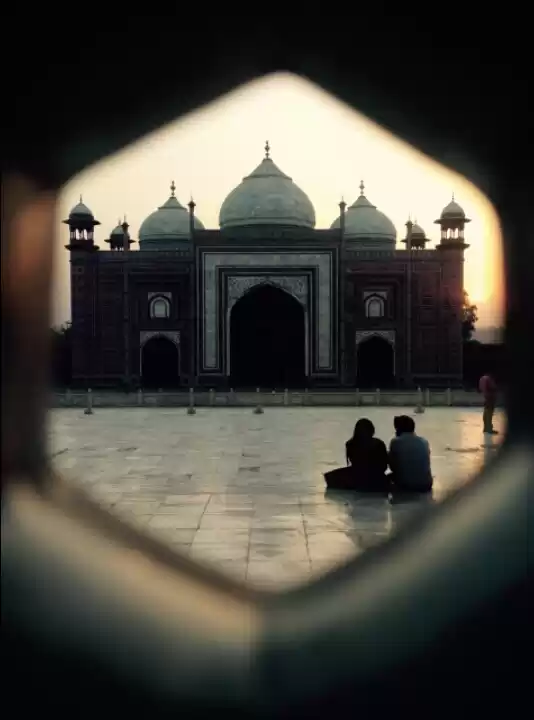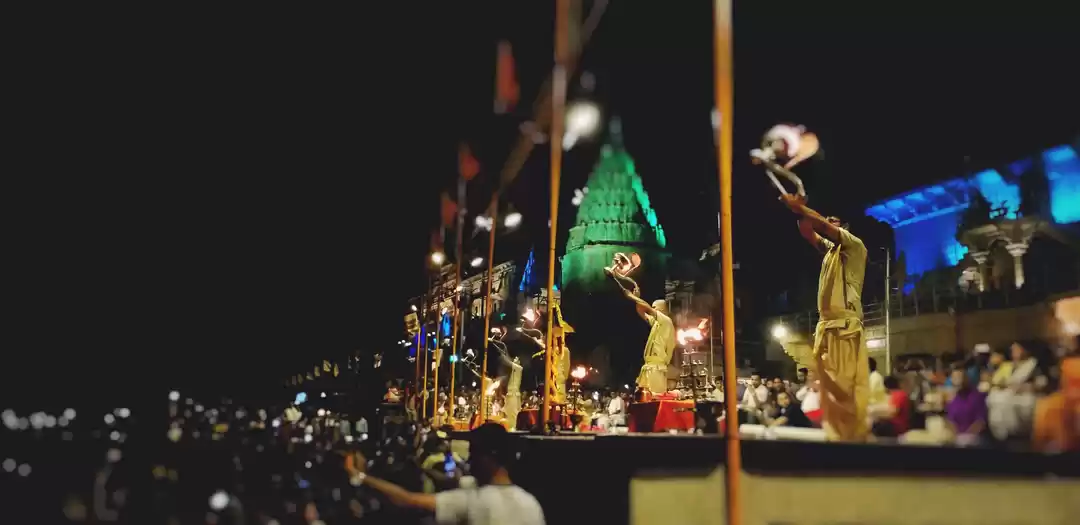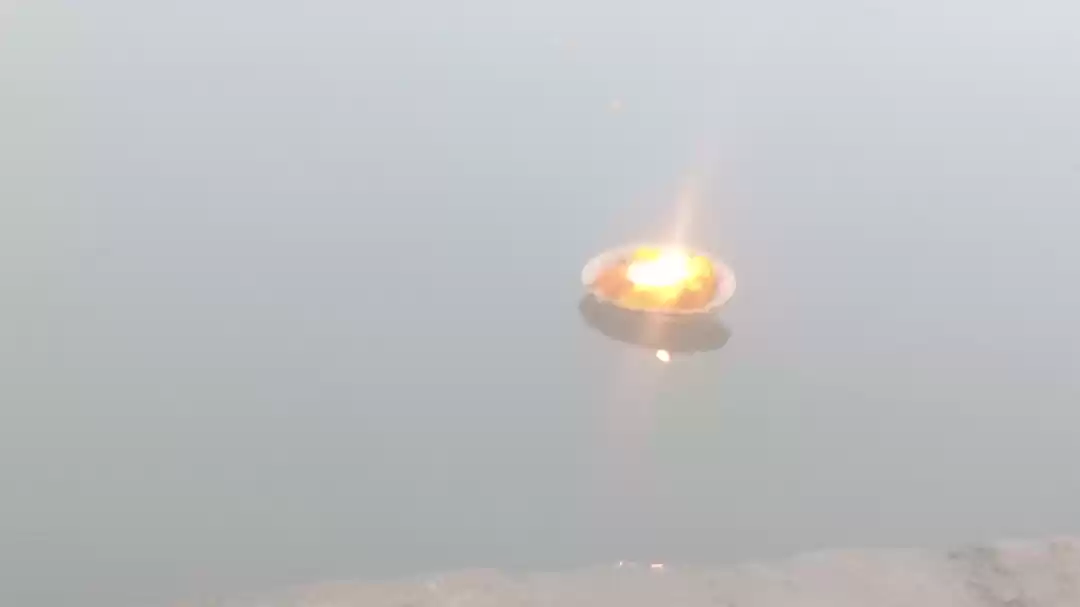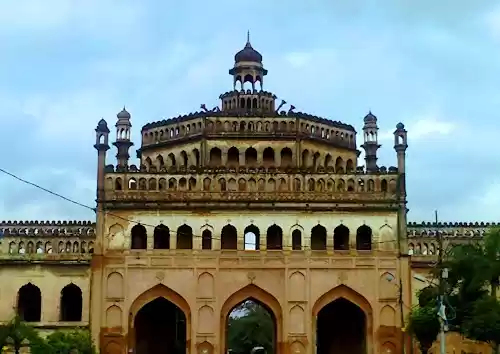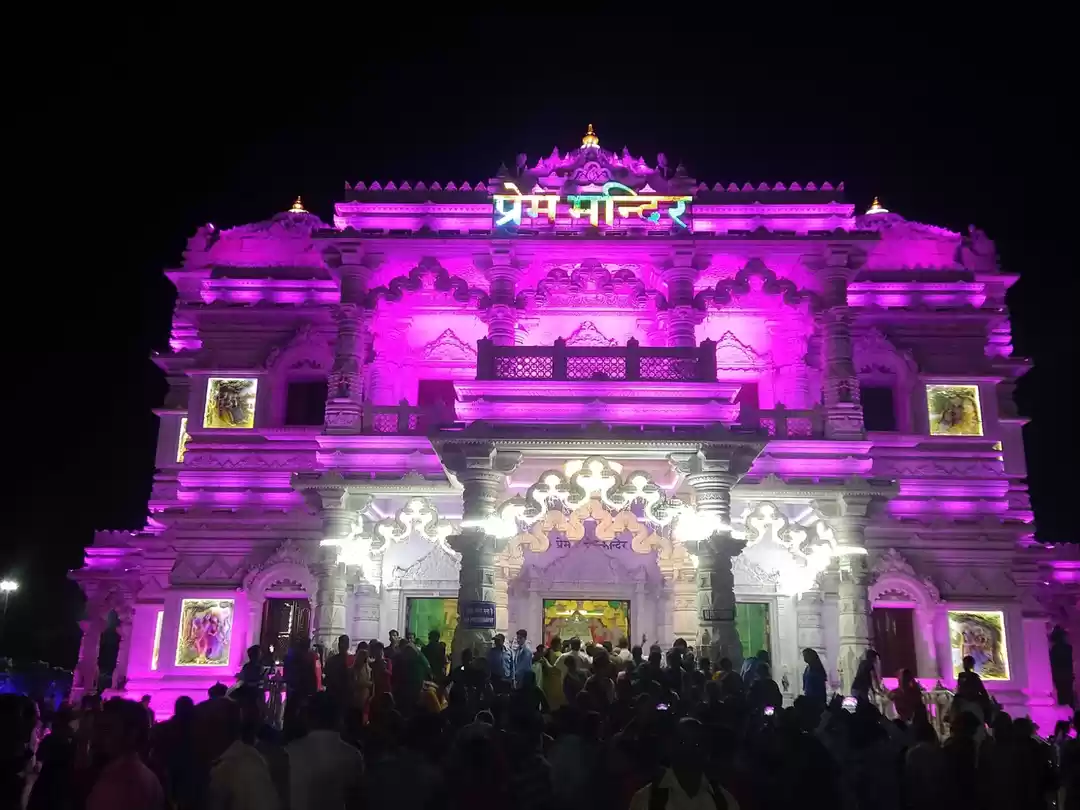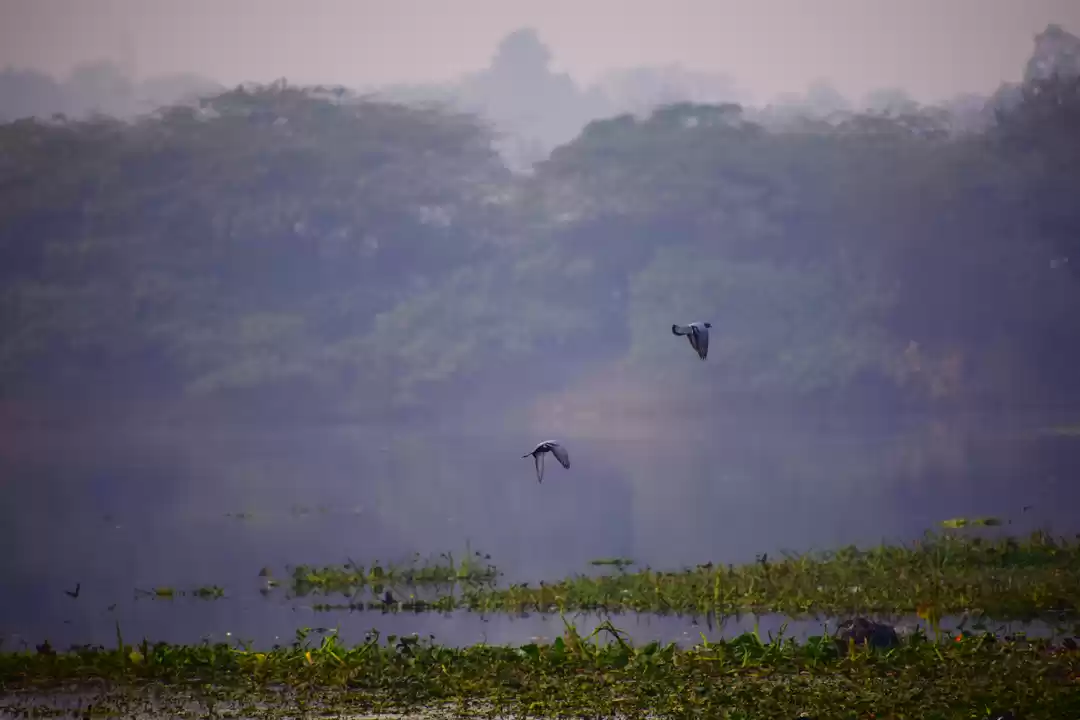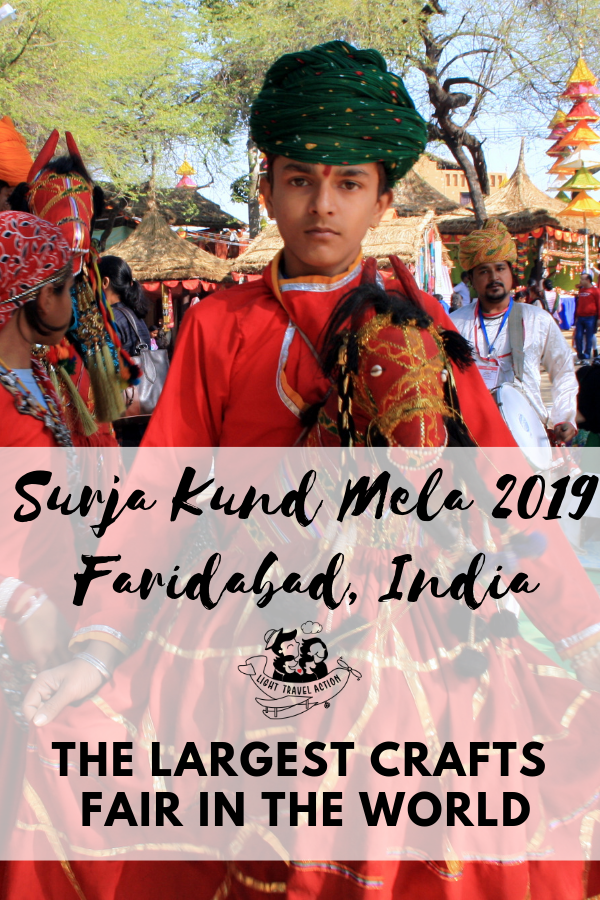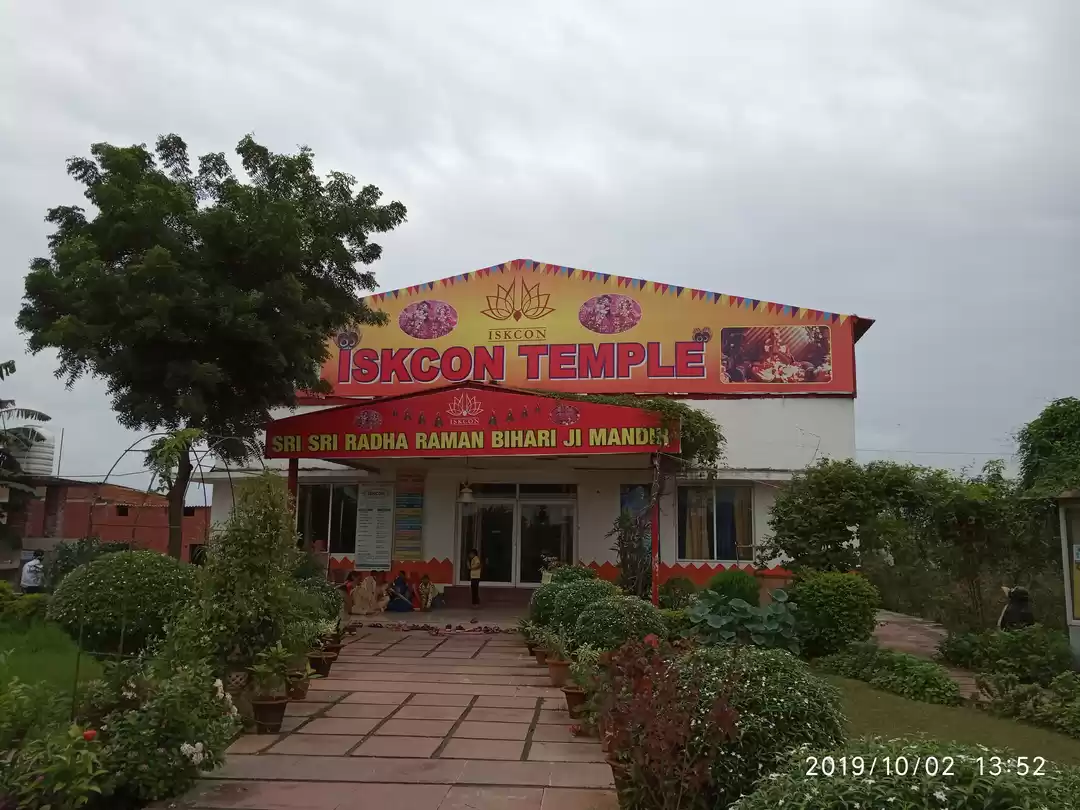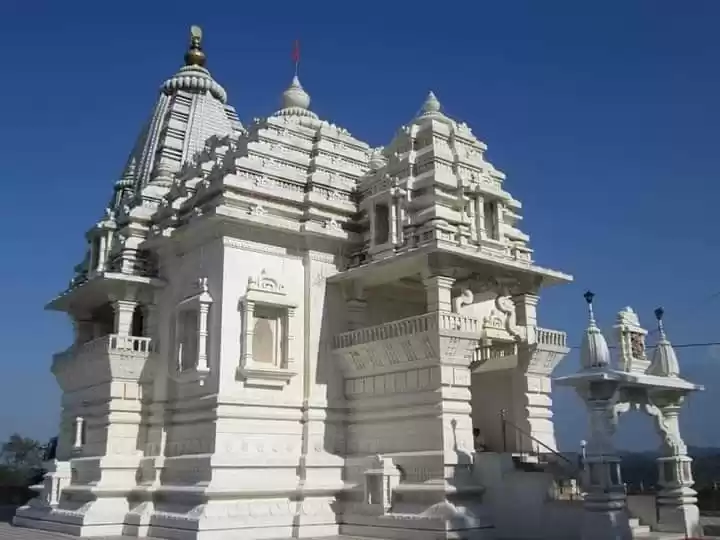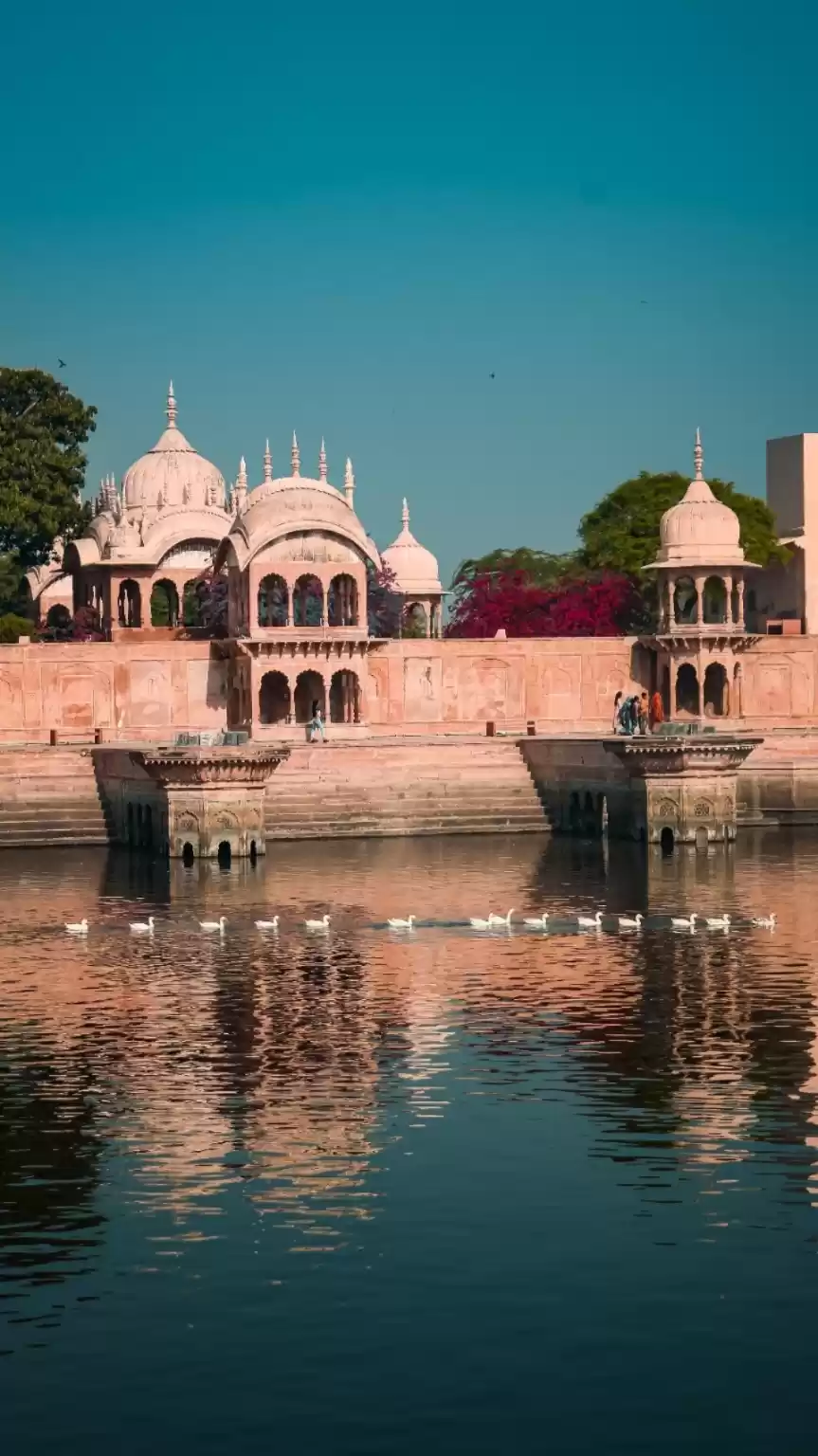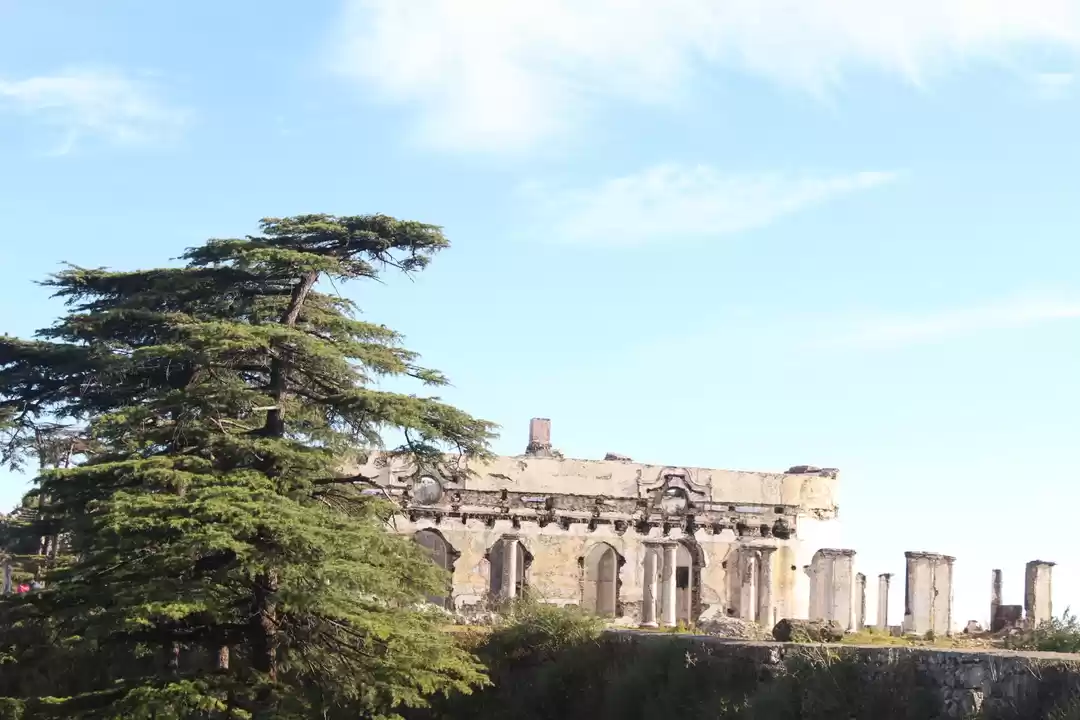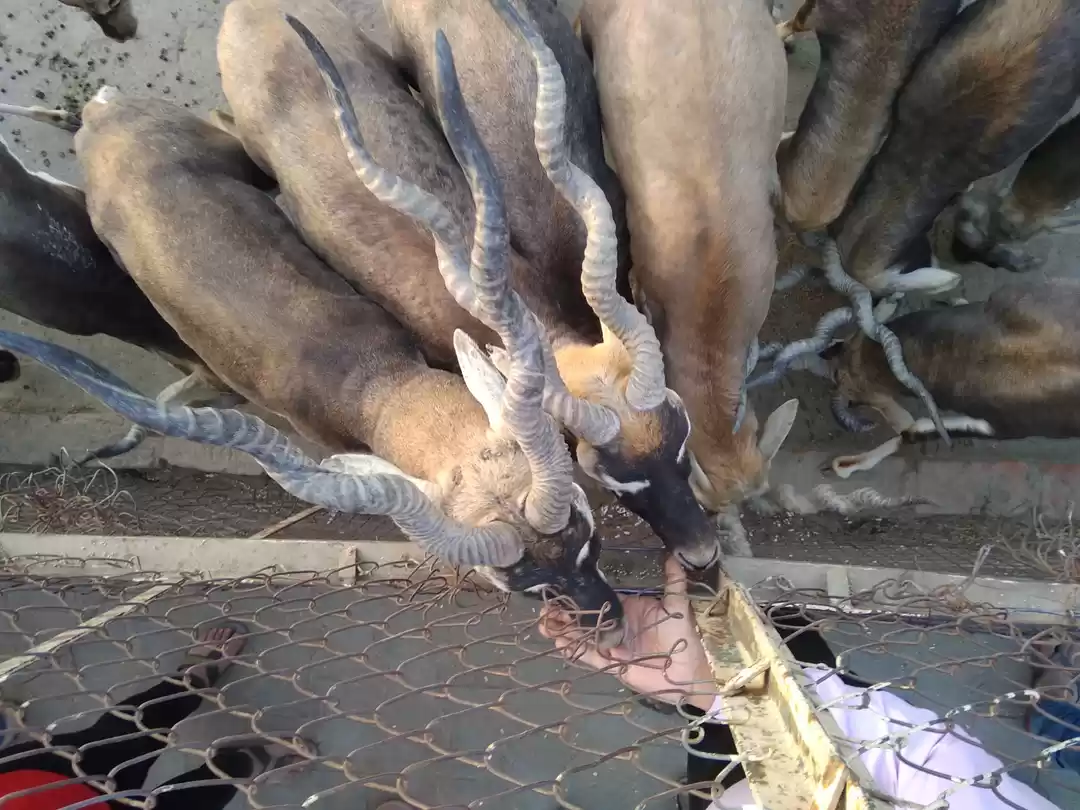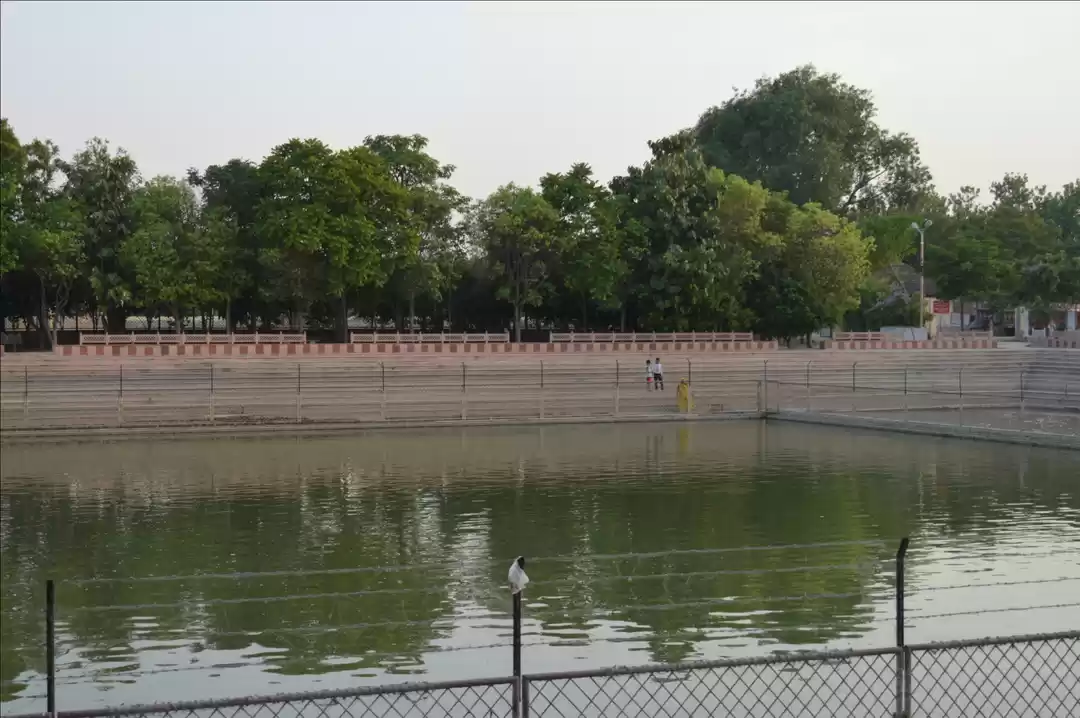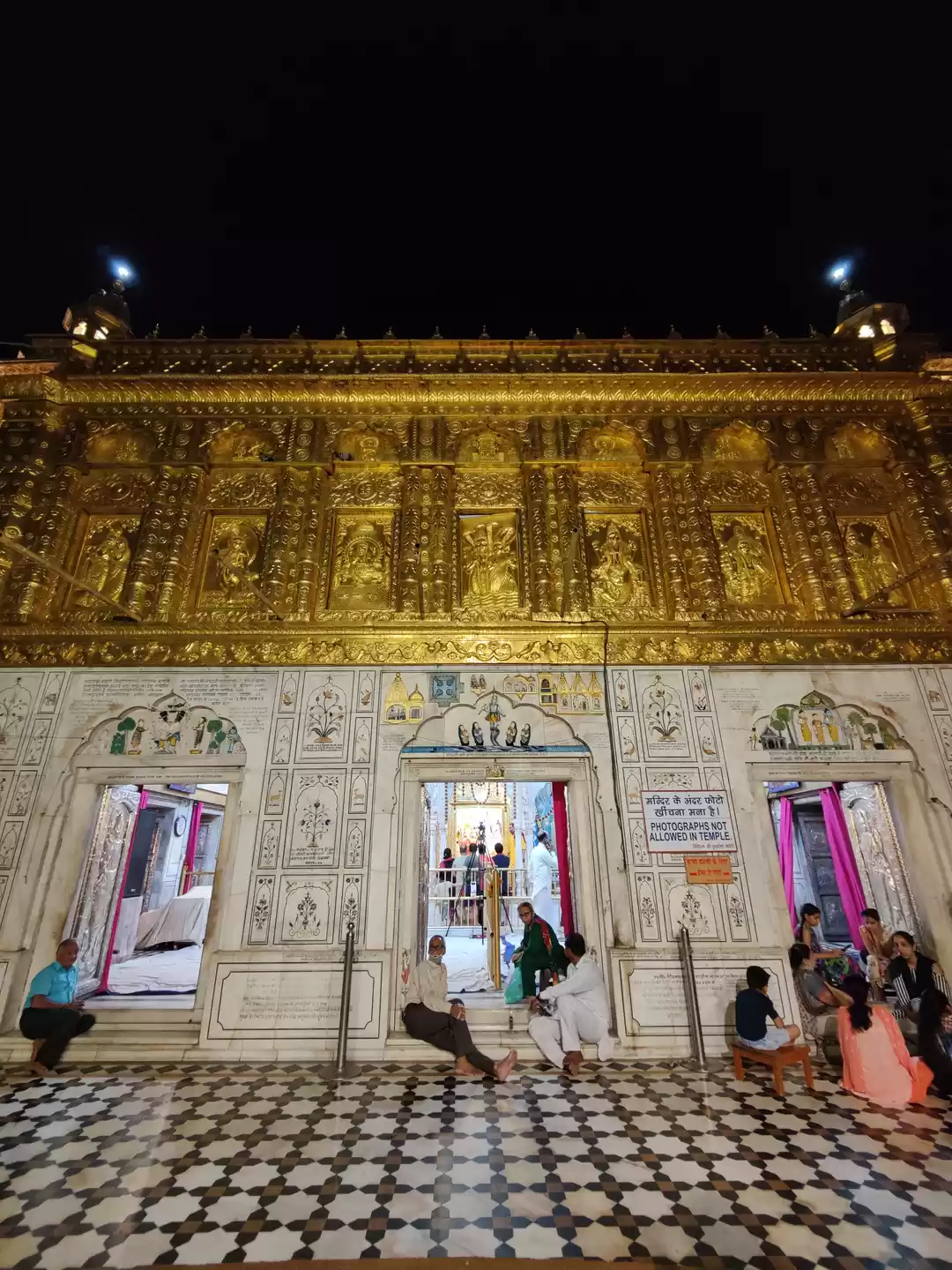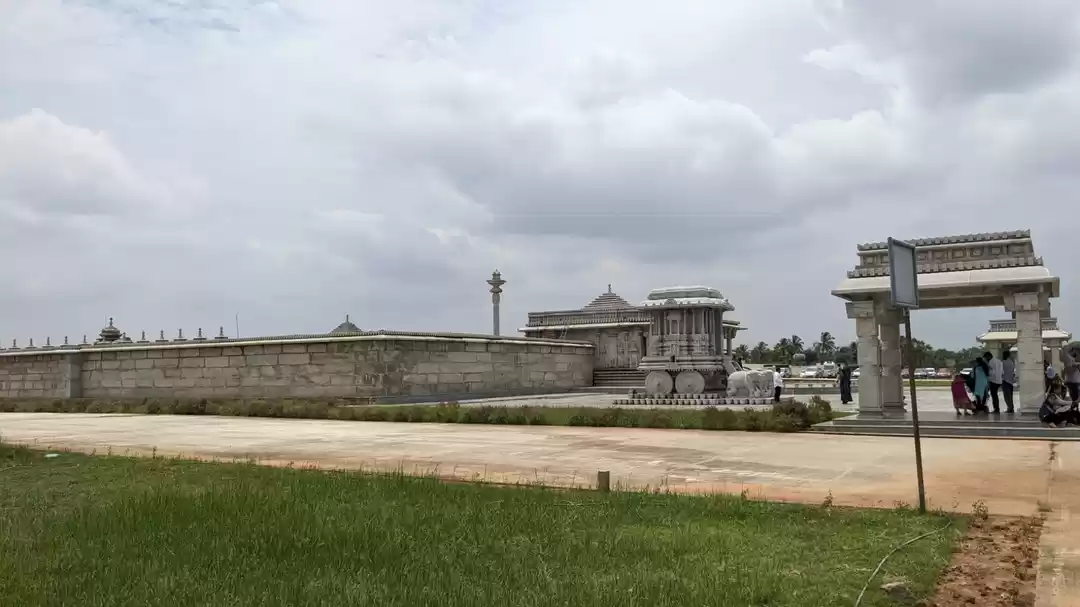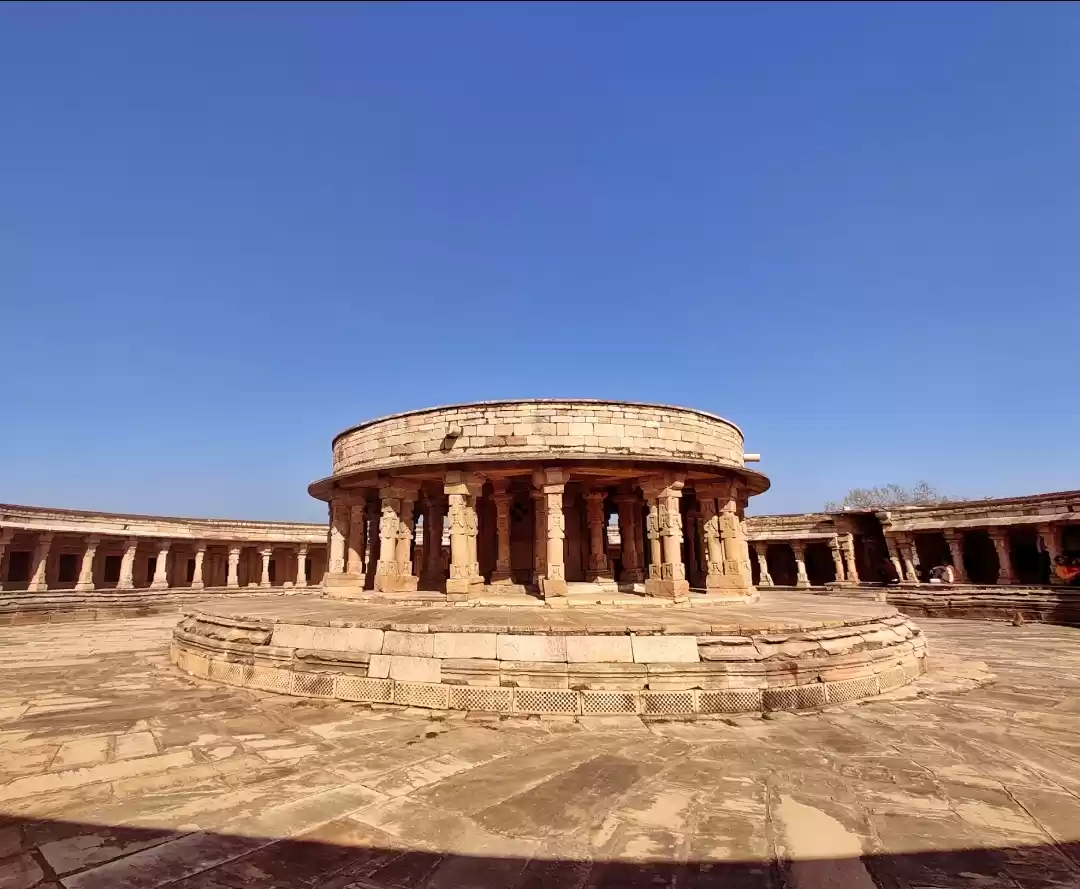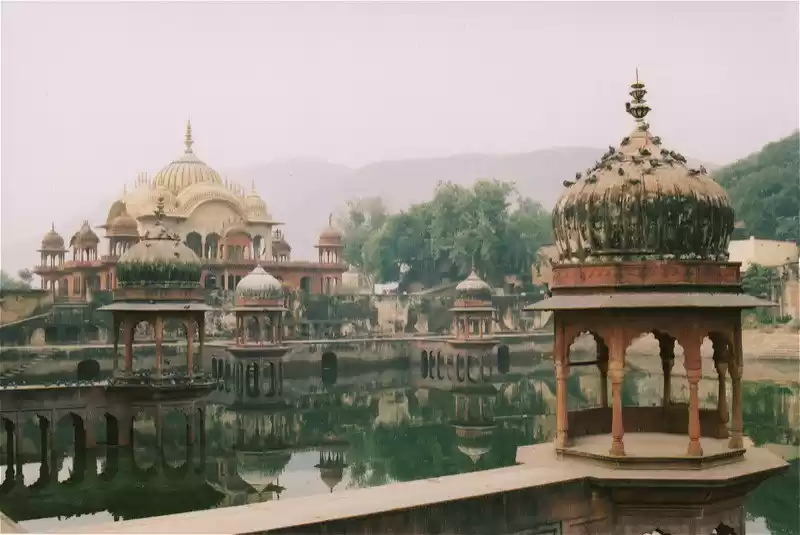Are you looking for a spiritual and cultural experience in the holy land of Vrindavan? Do you want to visit one of the most revered and unique temples of Lord Krishna and Radha? If yes, then you must not miss the Radha Raman Temple, the divine abode of the self-manifested deity of Radha Raman.
In this article, we will guide you through everything you need to know about the Radha Raman Temple, such as its history, significance, architecture, festivals, darshan, location, and nearby attractions. We will also share some tips and insights to help you plan your visit and make the most of your time in Vrindavan.

History of Radha Raman Temple
The Radha Raman Temple was established by Gopala Bhatta Goswami, one of the six Goswamis of Vrindavan who were the direct disciples of Chaitanya Mahaprabhu, the founder of the Gaudiya Vaishnava tradition. Gopala Bhatta Goswami was a great scholar and devotee of Lord Krishna and Radha. He had a deep desire to serve a deity of the divine couple, but he could not find one that matched his vision.
One day, he received a gift of twelve Saligram shilas from a pilgrim who had returned from Nepal. Saligram shilas are sacred stones that are considered to be the manifestation of Lord Vishnu. Gopala Bhatta Goswami placed the shilas in a water pot and worshipped them with love and devotion.
On the auspicious day of Narsingh Chaturdashi in 1542, Gopala Bhatta Goswami was surprised to find that one of the shilas had transformed into a beautiful deity of Lord Krishna playing the flute. The deity was so charming and attractive that Gopala Bhatta Goswami named him Radha Raman, which means "the one who gives pleasure to Radha".
The deity of Radha Raman is considered to be self-manifested and very rare, as he is the only deity of Lord Krishna that has a beard. He is also the only deity that does not have a separate deity of Radha by his side, as he is believed to have merged with her in his form. The original shila that manifested as Radha Raman is still visible on his back, and is worshipped along with him.
The Radha Raman Temple was built by Gopala Bhatta Goswami and his followers, with the help of the local kings and nobles. The temple has been preserved and renovated over the centuries, and is still managed by the descendants of Gopala Bhatta Goswami. The temple is one of the seven temples of Vrindavan that are recognized by the Gaudiya Vaishnavas as the most authentic and ancient.
Significance of Radha Raman Temple
The Radha Raman Temple is one of the most revered and visited temples in Vrindavan, as it is the divine abode of the self-manifested deity of Radha Raman. The temple is a place of pilgrimage for the devotees of Lord Krishna and Radha, who come here to seek their blessings and grace.
The temple is also a place of great significance for the followers of Gaudiya Vaishnavism, as it is the seat of Gopala Bhatta Goswami, one of the six Goswamis of Vrindavan who were the direct disciples of Chaitanya Mahaprabhu. The temple houses the samadhi (tomb) of Gopala Bhatta Goswami, as well as his personal belongings, such as his books, clothes, and utensils. The temple also preserves the original cooking utensils that were used by Gopala Bhatta Goswami to prepare food for Radha Raman.
The temple is also a place of wonder and beauty, as it showcases the special features of the deity and the temple, such as:
- The self-manifested form of Radha Raman, who is the only deity of Lord Krishna that has a beard and does not have a separate deity of Radha by his side.
- The original shila that manifested as Radha Raman, which is still visible on his back and is worshipped along with him.
- The sandalwood altar that was carved by the great-grandson of Gopala Bhatta Goswami, and is considered to be the most beautiful altar in Vrindavan.
- The Govardhan shila that was given to Gopala Bhatta Goswami by Chaitanya Mahaprabhu, and is said to have the footprint of Lord Krishna on it.
The temple is also a place of spiritual benefits, as it is believed that visiting and worshipping the temple can grant the following blessings:
- The fulfillment of one's material and spiritual desires, as Radha Raman is the source of all pleasure and joy.
- The attainment of pure love and devotion for Lord Krishna and Radha, as Radha Raman is the embodiment of their divine love.
- The liberation from the cycle of birth and death, as Radha Raman is the supreme lord and the ultimate destination of all souls.
Architecture of Radha Raman Temple
The Radha Raman Temple is a splendid example of the temple architecture of Vrindavan, which reflects the influence of the Rajasthani and Mughal styles. The temple is built of red sandstone and white marble, and is adorned with intricate carvings and paintings. The temple has a dome-shaped roof and a gold-plated spire, which add to its elegance and grandeur.
The temple has various sections and chambers, such as:
- The sanctum sanctorum, where the deity of Radha Raman is installed on a marble throne, surrounded by silver and gold ornaments, flowers, and lamps. The deity is dressed and decorated in different ways according to the seasons and festivals, and is offered various food items throughout the day. The deity is also accompanied by the deities of Gopala Bhatta Goswami, Chaitanya Mahaprabhu, and Nityananda Prabhu, who are placed on either side of him.
- The nat mandir, where the devotees gather to sing and dance in praise of Radha Raman. The nat mandir has a marble floor and a wooden ceiling, and is decorated with paintings of the pastimes of Lord Krishna and Radha. The nat mandir also has a gallery where the musical instruments used for the kirtan (devotional songs) are kept.
- The samadhi mandir, where the samadhi (tomb) of Gopala Bhatta Goswami is located, along with his personal belongings, such as his books, clothes, and utensils. The samadhi mandir is a sacred place where the devotees pay their respects to Gopala Bhatta Goswami and seek his guidance and inspiration.
- The prasadam hall, where the food offered to Radha Raman is distributed to the devotees as prasadam (sanctified food). The prasadam hall has a large kitchen where the food is prepared by the temple priests and the devotees. The prasadam hall also has a dining area where the devotees can sit and enjoy the prasadam.
- The museum, where the relics and artifacts related to the temple and its history are displayed. The museum has a collection of old photographs, paintings, manuscripts, coins, and jewelry that showcase the rich heritage and culture of the temple and Vrindavan.
Festivals of Radha Raman Temple
The Radha Raman Temple is a place of joy and celebration, as it hosts various festivals throughout the year that commemorate the appearance, pastimes, and qualities of Radha Raman. The festivals are marked by special rituals, offerings, decorations, and celebrations that attract thousands of devotees and tourists from all over the world. Some of the major festivals celebrated in the temple are:
Radha Raman Jayanti: This is the most important festival of the temple, as it celebrates the appearance day of Radha Raman, who manifested from a Saligram shila on the auspicious day of Narsingh Chaturdashi. The festival falls in the month of May or June, and is celebrated with great pomp and splendor. The deity of Radha Raman is bathed with milk, yogurt, honey, and ghee, and is adorned with new clothes and jewels. The temple is decorated with flowers, lights, and banners, and the devotees sing and dance in ecstasy. The festival is also known as the Chandan Yatra, as the deity is smeared with sandalwood paste to keep him cool in the summer heat.
Narsingh Chaturdashi: This is the second most important festival of the temple, as it marks the day when Radha Raman manifested from a Saligram shila. The festival falls in the month of May or June, and is celebrated with great devotion and reverence. The deity of Radha Raman is offered a special worship and aarti, and the devotees fast and pray for his protection and mercy. The festival is also known as the Narasimha Jayanti, as it commemorates the appearance day of Lord Narasimha, the half-man half-lion incarnation of Lord Vishnu, who killed the demon Hiranyakashipu and saved his devotee Prahlad.
Annakut: This is the festival of offering a mountain of food to Radha Raman, as a symbol of gratitude and love. The festival falls on the day after Diwali, and is celebrated with great enthusiasm and generosity. The deity of Radha Raman is offered hundreds of varieties of dishes, fruits, sweets, and drinks, and is decorated with new clothes and jewels. The temple is decorated with flowers, lights, and rangoli, and the devotees sing and dance in joy. The festival is also known as the Govardhan Puja, as it commemorates the day when Lord Krishna lifted the Govardhan hill to protect the people of Vrindavan from the wrath of Indra, the king of heaven.
Holi: This is the festival of colors and love, as it celebrates the divine romance of Radha Raman and the playful mood of Lord Krishna. The festival falls in the month of March, and is celebrated with great fun and fervor. The deity of Radha Raman is smeared with colorful powder and water, and is adorned with new clothes and jewels. The temple is decorated with flowers, balloons, and streamers, and the devotees throw colors and water on each other. The festival is also known as the Braj Holi, as it is celebrated in the traditional way of the Braj region, where Lord Krishna performed his childhood pastimes.
These are some of the major festivals celebrated in the Radha Raman Temple, but there are many more festivals and occasions that are observed throughout the year, such as Janmashtami, Radhashtami, Nityananda Trayodashi, Gaura Purnima, Jhulan Yatra, and Kartik Purnima. Each festival has its own significance and charm, and offers a unique opportunity to witness and participate in the glorious worship and service of Radha Raman.

Darshan of Radha Raman Temple
The darshan of Radha Raman Temple is a blissful and enriching experience, as it allows the devotees to see and worship the self-manifested deity of Radha Raman, who is the source of all pleasure and joy. The darshan of Radha Raman Temple is also a rare and precious opportunity, as it is one of the few temples in Vrindavan that offer darshan throughout the day, without any break or interruption.
The timings and details of the daily worship and offerings in the temple are as follows:
- The temple opens at 4:00 am and closes at 11:00 pm.
- The first aarti (worship with lamps) is performed at 4:30 am, followed by the mangala aarti (auspicious worship) at 5:00 am.
- The deity of Radha Raman is offered various food items, such as milk, fruits, sweets, and snacks, at different times of the day, such as 8:00 am, 11:00 am, 12:00 pm, 4:00 pm, 7:00 pm, and 9:00 pm.
- The deity of Radha Raman is dressed and decorated in different ways according to the seasons and festivals, and is offered various ornaments, flowers, and lamps. The devotees can witness the changing of the clothes and the decorations at 8:00 am, 12:00 pm, and 4:00 pm.
- The last aarti (worship with lamps) is performed at 10:30 pm, followed by the shayana aarti (bedtime worship) at 10:45 pm.
The information about the temple entry fee and the temple aarti are as follows:
- The temple entry is free for all the devotees, but they have to follow the rules and regulations of the temple, such as maintaining cleanliness, modesty, and silence.
- The temple aarti is a special worship that is performed with lamps, incense, flowers, and music, and is a way of expressing one's love and devotion to Radha Raman. The temple aarti is open for all the devotees, but they have to pay a nominal fee of Rs. 50 to Rs. 100, depending on the type and time of the aarti. The temple aarti is a very popular and crowded event, so the devotees have to book their tickets in advance from the temple office or online.
The online darshan facility provided by the Utsav app and the contact details and phone number of the temple and the app are as follows:
- The online darshan facility is a convenient and innovative service that allows the devotees to see and worship Radha Raman from anywhere in the world, through their smartphones or computers. The online darshan facility is provided by the Utsav app, which is a dedicated app for the temples and festivals of Vrindavan. The Utsav app also provides other features, such as live streaming, online booking, online puja, online donation, and online chat.
- The contact details and phone number of the temple are: Radha Raman Temple, Radha Raman Bazar, Vrindavan, Mathura, Uttar Pradesh, India. Phone: +91-565-244-3270.
The tips and guidelines for the visitors to have a smooth and pleasant darshan experience are as follows:
- The best time to visit the temple is in the morning or evening, when the crowd is less and the weather is pleasant.
- The devotees should wear clean and modest clothes, and avoid wearing leather, shoes, or socks inside the temple premises.
- The devotees should not carry any valuables, cameras, or mobile phones inside the temple, as they are not allowed and there is no locker facility available.
- The devotees should not touch or disturb the deity, the priests, or the temple staff, and should respect their privacy and service.
- The devotees should not take any prasadam (sanctified food) or water from the temple, as they are meant for the deity only. They can buy or receive prasadam from the prasadam hall or the temple shop.
- The devotees should not litter or spit inside or outside the temple, and should keep the temple clean and tidy.
- The devotees should not indulge in any commercial or illegal activities inside or outside the temple, and should beware of any frauds or touts.
Okay, I will continue the article about Radha Raman Temple. Here is the next part of the article:
Location of Radha Raman Temple
The Radha Raman Temple is located in the heart of Vrindavan, the holy town where Lord Krishna spent his childhood and youth. The temple is situated in the Radha Raman Bazar, which is a bustling market area that sells various items related to the temple and the culture of Vrindavan, such as clothes, jewelry, books, paintings, and prasadam.
The distance and directions from Mathura and Delhi to the temple and the modes of transport available are as follows:
- From Mathura: The temple is about 15 km away from Mathura, the birthplace of Lord Krishna and the district headquarters of Mathura. The devotees can reach the temple by road, rail, or bus. The road route is via the NH-2 and the Yamuna Expressway, which takes about 30 minutes. The rail route is via the Mathura-Vrindavan Passenger Train, which takes about 45 minutes. The bus route is via the Uttar Pradesh State Road Transport Corporation (UPSRTC) buses, which take about an hour.
- From Delhi: The temple is about 160 km away from Delhi, the capital city of India and the nearest airport to Vrindavan. The devotees can reach the temple by road, rail, or bus. The road route is via the NH-2 and the Yamuna Expressway, which takes about 3 hours. The rail route is via the Delhi-Mathura Express Train, which takes about 2 hours. The bus route is via the Delhi Transport Corporation (DTC) or the UPSRTC buses, which take about 4 hours.
Nearby Attractions of Radha Raman Temple
The Radha Raman Temple is not only a place of worship and devotion, but also a place of exploration and discovery, as it is surrounded by many other temples and places of interest in Vrindavan that can be visited along with the Radha Raman Temple. Some of the nearby attractions of the Radha Raman Temple are:
Banke Bihari Temple: This is one of the most popular and visited temples in Vrindavan, as it is the home of the enchanting deity of Banke Bihari, who is another form of Lord Krishna. The temple is known for its lively and festive atmosphere, as the devotees sing and dance in front of the deity, who is hidden behind a curtain and revealed at intervals. The temple is also known for its special darshan on Wednesdays, when the deity is dressed in white clothes and adorned with white flowers.
Prem Mandir: This is one of the most beautiful and modern temples in Vrindavan, as it is a magnificent structure made of white marble and studded with lights. The temple is dedicated to the divine love of Lord Krishna and Radha, and showcases their pastimes and qualities through exquisite sculptures and paintings. The temple is also known for its musical fountain show and its spectacular night view, when the temple is illuminated with different colors.
ISKCON Temple: This is one of the most influential and renowned temples in Vrindavan, as it is the headquarters of the International Society for Krishna Consciousness (ISKCON), which is a global movement that propagates the teachings and practices of Lord Krishna and Chaitanya Mahaprabhu. The temple is also known as the Krishna Balaram Mandir, as it houses the deities of Krishna and Balaram, along with Radha Shyamasundar and Gaura Nitai. The temple is also known for its serene and spiritual ambience, as the devotees chant and meditate in the temple premises.
Kusum Sarovar: This is one of the most scenic and serene places in Vrindavan, as it is a large lake that is surrounded by lush green gardens and ancient monuments. The lake is said to be the place where Lord Krishna and Radha used to meet and collect flowers for their worship. The lake is also said to have healing properties, as it is believed to cure skin diseases and other ailments. The lake is also known for its sunset view, when the lake reflects the colors of the sky and the monuments.
Yamuna River: This is one of the most sacred and significant places in Vrindavan, as it is the river that flows through the town and nourishes its life and culture. The river is said to be the consort of Lord Krishna, and the witness of his pastimes and miracles. The river is also said to be the source of salvation, as it washes away the sins and sorrows of those who take a dip in its waters. The river is also known for its boat ride, when the devotees can enjoy the beauty and tranquility of the river and the town.
These are some of the nearby attractions of the Radha Raman Temple, but there are many more places and activities that can be explored and enjoyed in Vrindavan, such as the Govardhan Hill, the Barsana Temple, the Nidhivan, the parikrama (circumambulation), and the bhandara (feast). Each place and activity has its own charm and appeal, and offers a unique opportunity to experience and appreciate the divine and diverse aspects of Vrindavan.
Conclusion
The Radha Raman Temple is a must-visit destination for anyone who wants to have a spiritual and cultural experience in the holy land of Vrindavan. The temple is the divine abode of the self-manifested deity of Radha Raman, who is the source of all pleasure and joy. The temple is also the seat of Gopala Bhatta Goswami, one of the six Goswamis of Vrindavan, who were the direct disciples of Chaitanya Mahaprabhu. The temple is also a place of wonder and beauty, as it showcases the special features of the deity and the temple, such as the self-manifested form, the original shila, the absence of Radha's deity, the sandalwood altar, and the Govardhan shila.
The temple is also a place of joy and celebration, as it hosts various festivals throughout the year that commemorate the appearance, pastimes, and qualities of Radha Raman, such as Radha Raman Jayanti, Narsingh Chaturdashi, Annakut, and Holi.

